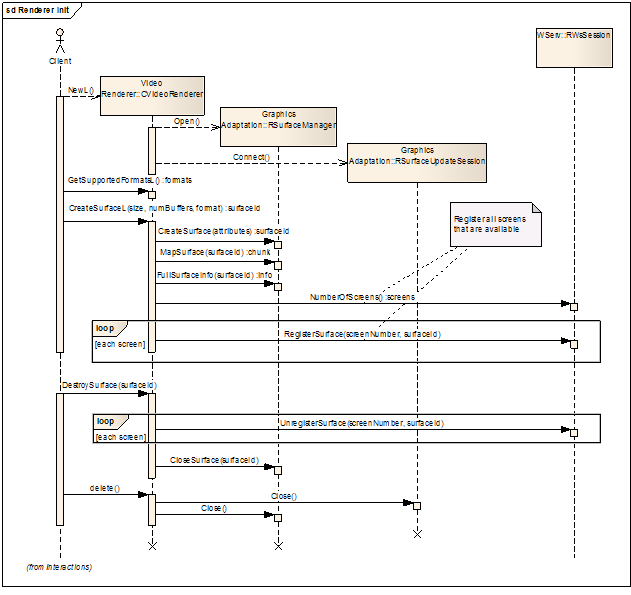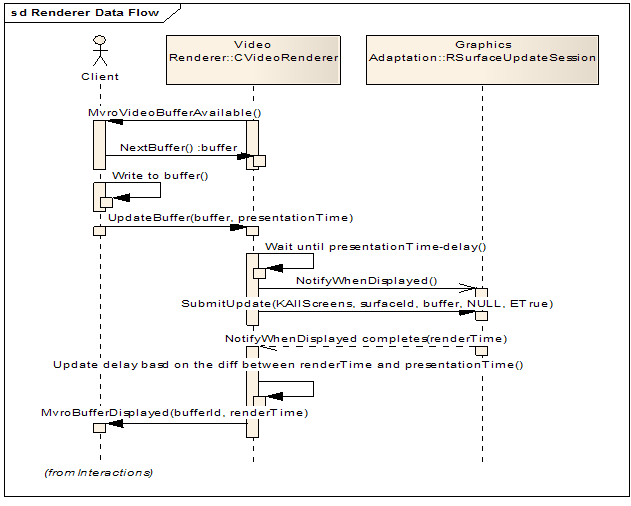Global Surface Updates
Global surface updates are surface updates that are submitted to all displays rather than just one display. By using global surface updates, the Video Renderer can update surfaces on all displays including ones that it is not aware of. When the Video Renderer sends a global surface update, the update is broadcast by the Graphics Surface Update component to all Composition Implementations present in the system. Each Composition Implementation determines whether the surface is displayed on its associated screen and if so, forces an update. For more information, see Global Surface Updates in the Graphics Guide.
The Video Renderer registers and unregisters surfaces with the Window Server for all available displays. When the client calls CVideoRenderer::CreateSurfaceL() , the Video Renderer creates the surface and then registers it with each display. When the client calls CVideoRenderer::DestroySurfaceL() , the Video Renderer unregisters the surface with each display and then destroys it. The following sequence diagram shows how the Video Renderer registers and unregisters surfaces:
The Video Renderer uses the global constant KAllScreens (provided by the Surface Update component) to ensure all displays are updated with new data. The following sequence diagram shows the Video Renderer passing KAllScreens in the call to RSurfaceUpdateSession::SubmitUpdate() :
Copyright ©2010 Nokia Corporation and/or its subsidiary(-ies).
All rights
reserved. Unless otherwise stated, these materials are provided under the terms of the Eclipse Public License
v1.0.

